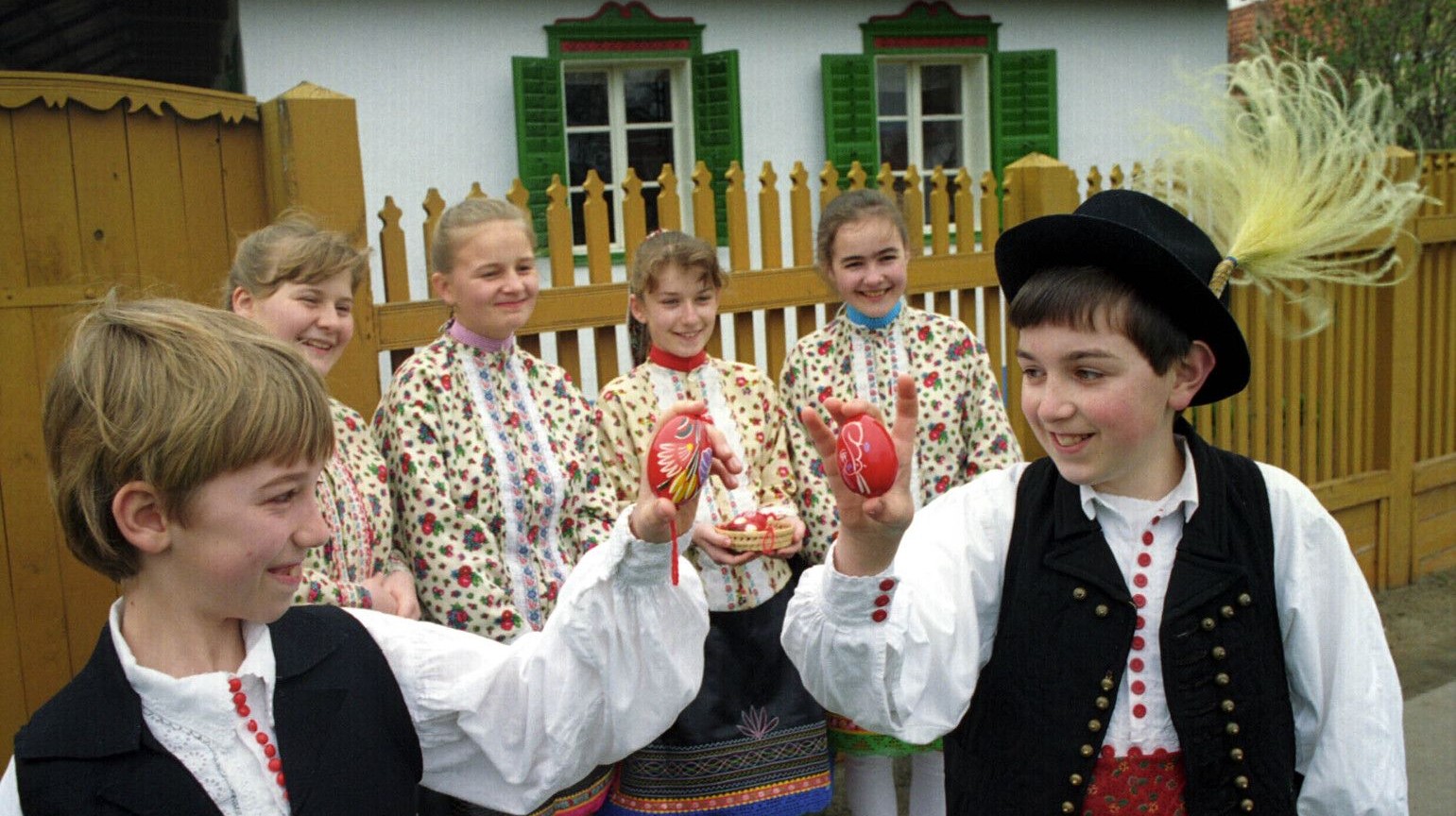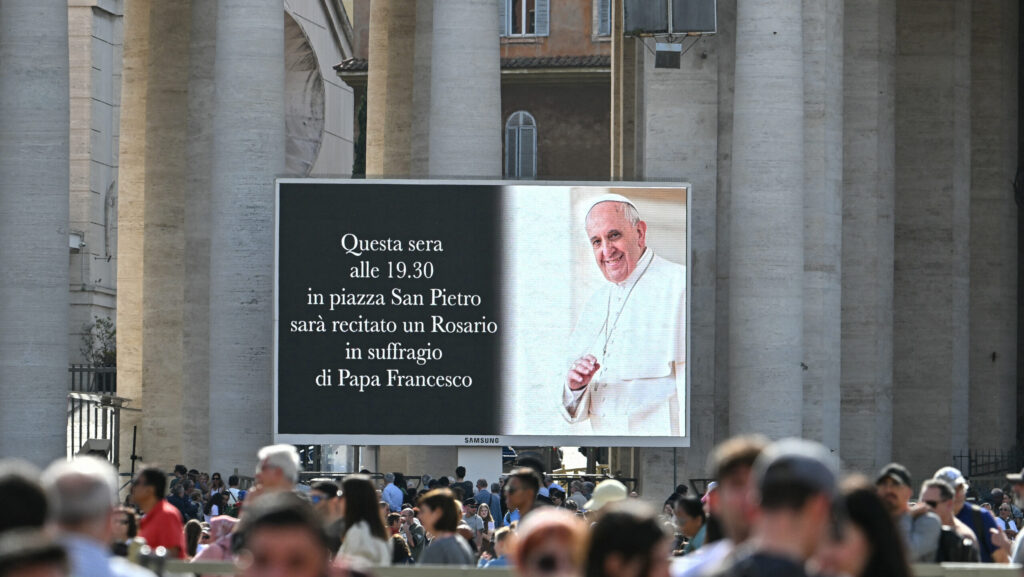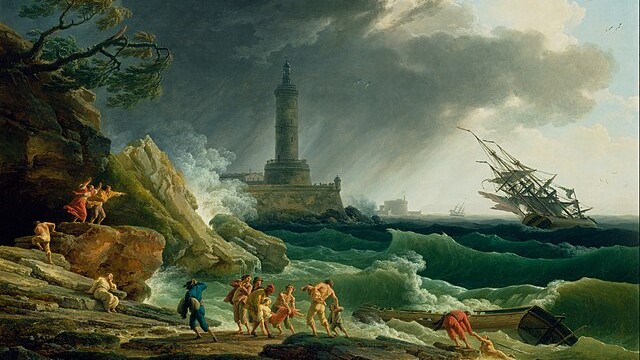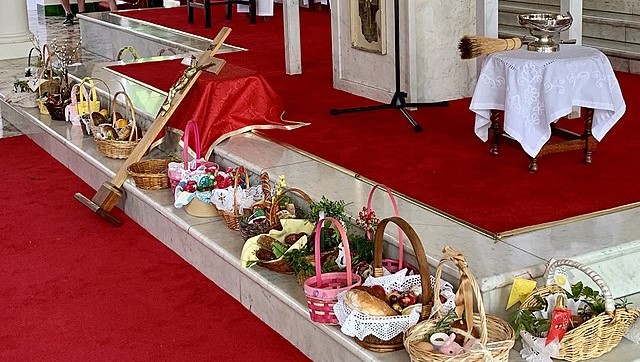The following is an adapted version of an article written by Orsolya Ferenczi-Bónis, originally published in Magyar Krónika.
The most characteristic tradition of Easter Monday is sprinkling (locsolkodás), which is based on the belief in the purifying and fertility-enhancing power of water. Its forms varied by region, such as egg rolling (tojáshajtás) or flag procession (zászlós felvonulás). The custom originates from ancient fertility rituals, just like the Easter whipping tradition. Young men would strike girls with a whip, called siba, saying: ‘Don’t get boils, don’t be flea-ridden, may you be fresher by next year!’ The girls would tie ribbons to the siba, offer wine to the young men, who received food from the mothers.
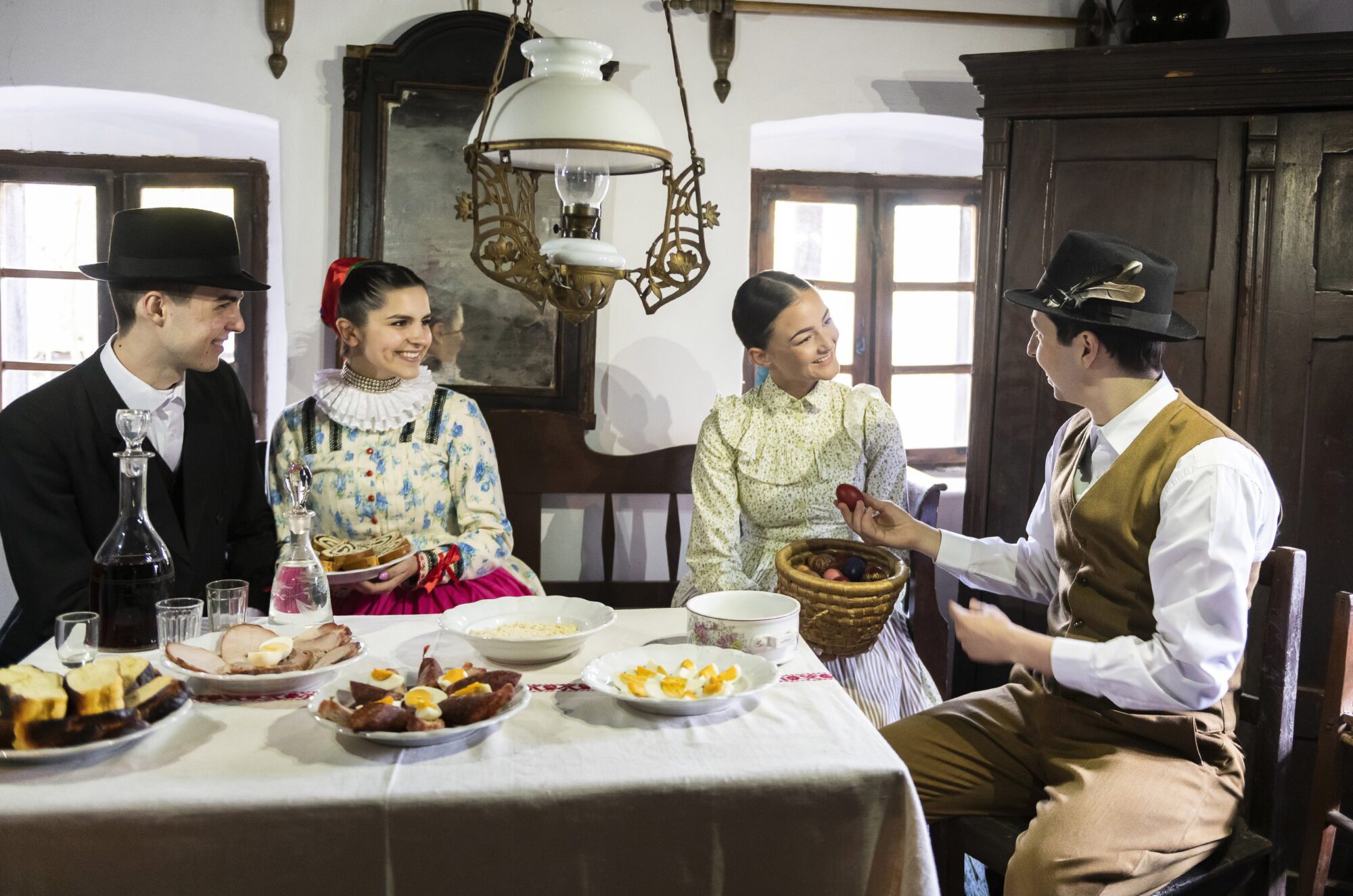
The ancient custom continued a pagan fertility and purification ritual, as well as a rite to ward off illness. According to Hungarian folklore, the same custom was used on other important days, such as the Day of the Holy Innocents, when children would be touched on the soles of their feet with willow twigs budding since Katalin, Borbála, and Luca days.
The tradition was believed to have healing powers. As described by István Bogdán in his book Old Hungarian Festivities (Régi magyar mulatságok), the custom is a ‘Christianized version, but behind it lies an ancient belief that tapping with a budding twig brings fertility and health.’ The green twigs used for this symbolized the renewal of life, which is why they were considered especially suitable for banishing misfortune and for health rituals. In Catholic symbolism, this evolved into a way to bless and share health.
Dawn Singing, Egg Painting, and Egg Rolling
According to Sándor Bálint’s book Christmas, Easter, Pentecost — The Traditions of Major Holidays in Hungary and Central Europe (Karácsony, húsvét, pünkösd — A nagyünnepek hazai és közép-európai hagyományvilágából), it was a custom in Transylvania for young men to decorate pine branches and place them at the doors of their sweethearts early on Easter Monday. If the village had no pine trees, they would even go to the 4th or 5th borders to find some. This tradition was tied to dawn singing (hajnalozás), during which young men would visit houses with pine branches to sprinkle the girls.

Just like with Easter sprinkling, the reward for Easter whipping was being treated to food and drink, along with a red or decorated egg. Eggs have been a symbol of fertility for millennia, and in Christian symbolism, they represent resurrection. Eggs were traditionally dyed using natural materials and plant-based dyes. The Ethnographic Encyclopedia (Néprajzi lexikon)notes that the red colour was derived from the berries of berzseny, a kind of shrub.
Eggs were often decorated with wax and scratching techniques, where the paint would not cover the scratched areas, leaving visible patterns. There were also various other ways to decorate the eggs, such as applying special leaf patterns that left the area underneath the paint light or attaching textile decorations, or adding hammered iron or softer metal ornaments.
Egg Games: Striking, Throwing, and Rolling
Many folk games are associated with Easter eggs. Although customs allowing the young to play and have fun during Lent developed, the fasting period was primarily marked by restrictions on entertainment. However, Easter marked the return of carefree outdoor play with the arrival of spring.
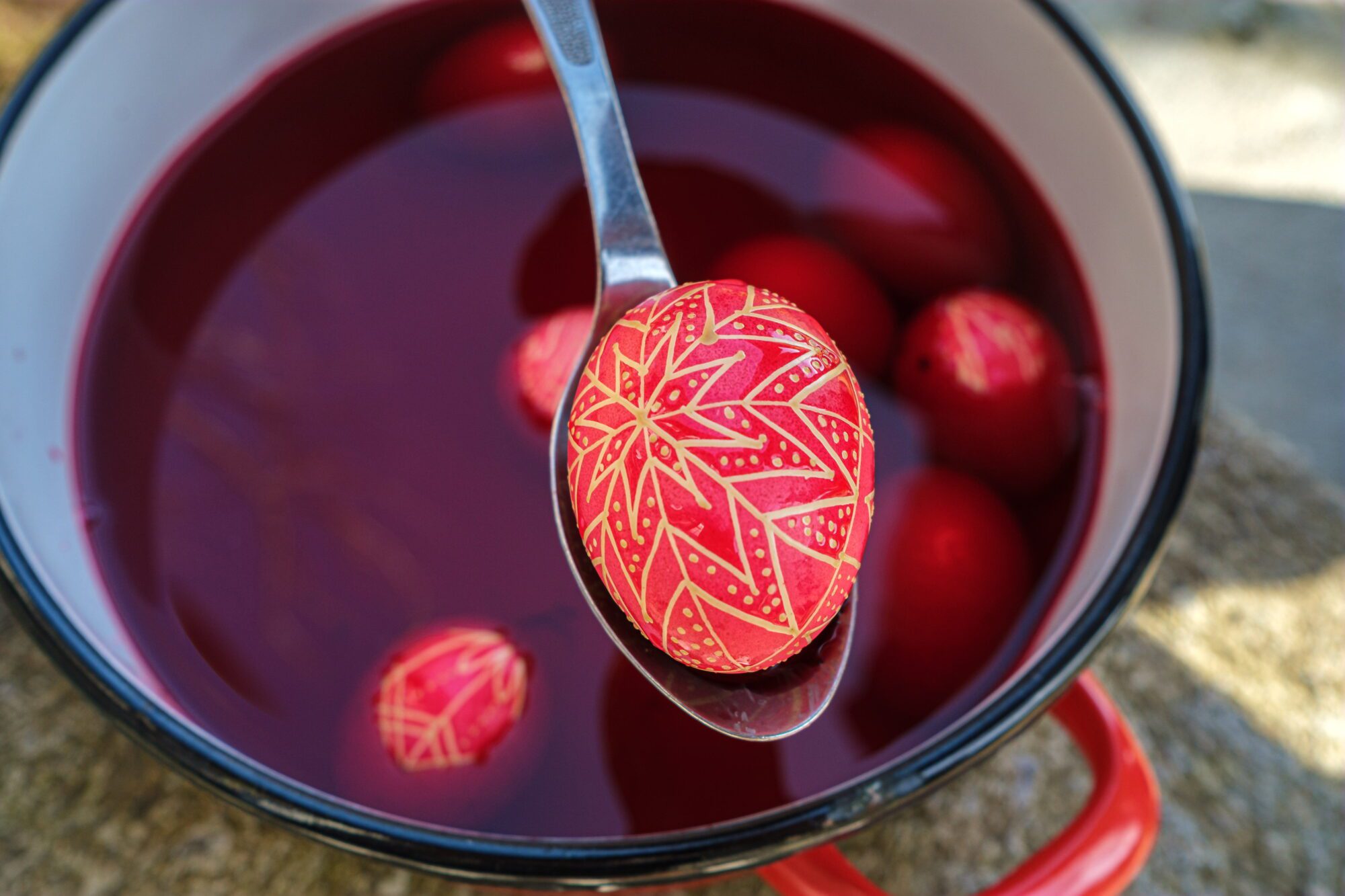
The rules for games like egg tapping, egg throwing, and egg rolling were simple: the winner was the one who managed to break more eggs than their opponents, hit a target, or roll their egg the furthest. The prize was the collection of eggs from the other participants. Eggs were not only given as a response to sprinkling (locsolkodás), but also as gifts from godparents to their godchildren. The Easter Bunny tradition, which began in German-speaking regions, spread first among urban citizens and later rural populations. The bunny is also a symbol of fertility.
The Emmaus Walk, Re-sprinkling, Dry Wednesday
The Easter Monday tradition of the Emmaus Walk (Emmauszjárás) saw the whole village, young and old, head out to the fields with baskets of blessed Easter foods and other treats. They celebrated in the meadows, forested areas, and vineyards outside the village.
The name of the tradition comes from the biblical story of the disciples on the road to Emmaus, who met the risen Christ.
Easter Sunday and Monday were times for dancing and holding balls, and Easter also marked the beginning of wedding season.
On Easter Tuesday, it was customary for girls to re-sprinkle the young men. Wednesday after Easter was a ‘work-forbidden day’—it was believed that anyone working on that day would suffer from dry hands, which is why it was also called dry Wednesday.
Related articles:
Click here to read the original article.

